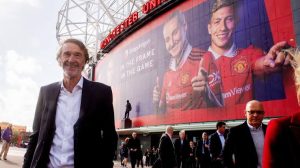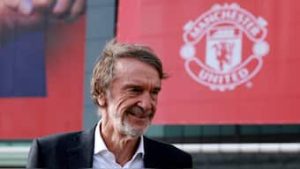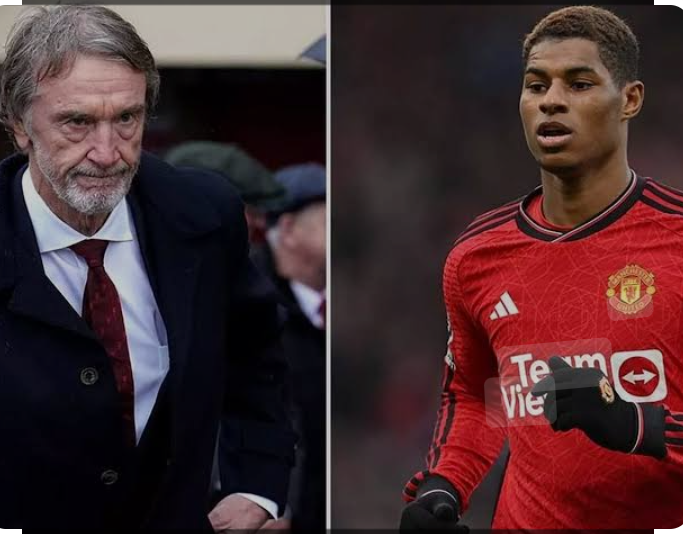When passion meets business acumen, football clubs are no longer just teams—they become empires. Sir Jim Ratcliffe, the British billionaire and owner of INEOS, is on a mission to reshape Manchester United’s financial landscape. But is his relentless cost-cutting strategy a recipe for success or a gamble with tradition?
The Arrival of Sir Jim Ratcliffe

In a sport where emotions often overshadow financial pragmatism, Sir Jim Ratcliffe entered Manchester United with a clear goal: streamline operations, optimize resources, and restore the club’s glory days—both on and off the pitch. Known for his sharp business sense and no-nonsense approach, Ratcliffe has wasted no time identifying areas of inefficiency.
Ratcliffe’s acquisition of a significant stake in Manchester United came with promises of financial discipline and long-term sustainability. While some fans anticipated a flood of marquee signings, Ratcliffe’s strategy has focused more on financial restructuring and sustainable investments.
The State of Manchester United’s Finances

Manchester United, despite being one of the most valuable football clubs in the world, has been burdened by mounting debt, exorbitant wage bills, and underperforming assets. Years of poor financial decisions, inflated transfer fees, and misaligned incentives have left the club in a precarious position.
Manchester United’s off-field woes continue to mount amidst a dismal run of form under new manager Ruben Amorim. Since British billionaire Jim Ratcliffe assumed control of football operations in February, the club has implemented severe cost-cutting measures
Ratcliffe’s first order of business was to dissect these inefficiencies. From overpriced transfer deals to bloated contracts for underperforming players, no stone has been left unturned.
Cost-Cutting in Action
Sir Jim Ratcliffe’s cost-cutting measures span multiple facets of the club:
1. Player Wages and Contracts

One of Ratcliffe’s most immediate priorities has been addressing Manchester United’s unsustainable wage structure. Players who fail to meet performance expectations are no longer guaranteed lucrative renewals. High earners who contribute little on the pitch are being scrutinized, with negotiations shifting towards performance-based incentives. For Example, Jadon Sancho was shipped off to Chelsea, Raphael Varane was let go, Aaron Wan-Bissaka was let go and there are question marks surrounding Marcus Rashford future as he earns a whooping £250,000 a week.
2. Transfer Market Strategy
Gone are the days of reckless spending on big-name players without a clear plan. Ratcliffe is keen on adopting a ‘smart recruitment’ model—prioritizing young, hungry talents over aging superstars demanding astronomical wages. This is shown in his signing of young players like Joshua Zirkzee and prioritizing young talents like Kobbie Mainoo and Alejandro Garnacho.
3. Operational Efficiencies
From matchday operations to the club’s sprawling commercial apparatus, Ratcliffe is implementing modern business strategies to reduce waste and improve efficiency. Whether it’s renegotiating supplier contracts or optimizing travel costs, every expenditure is being re-evaluated. He even tried to make Manchester United players, Garnacho and Mainoo fly with Manchester City’s plane to this year’s Balon D’or Ceremony-a request that wad later denied.
4. Balancing Passion with Pragmatism
Football isn’t just numbers on a spreadsheet—it’s about passion, heritage, and unforgettable moments. Critics argue that excessive cost-cutting might undermine Manchester United’s identity and ability to compete with financial juggernauts like Manchester City or Paris Saint-Germain.
However, Ratcliffe’s supporters see his approach as a necessary correction after years of financial recklessness. Clubs like Bayern Munich and Brighton have demonstrated how financial discipline and shrewd management can translate into sustained success. He allegedly even had to cancel this year’s end of the year party at Manchester United – a move that saved the club £250,000.
5. Reduced Funding for the Manchester Foundation

The latest move involves reportedly reducing funding for the Manchester United Foundation, the club’s charitable arm. According to Sky News, the Red Devils are considering slashing financial support by nearly £1 million from 2025. While the foundation will still receive other benefits, additional funding for events and fundraising initiatives will be curtailed.
The Long-Term Vision
Ratcliffe isn’t here for short-term fixes. His vision revolves around long-term stability, smarter spending, and creating a club culture where accountability thrives. Investments in the club’s academy and scouting network suggest a focus on building success from within.
The Challenges Ahead

Change is never easy, especially at a club as massive as Manchester United. Ratcliffe will need to balance immediate fan expectations with long-term financial goals. Resistance from certain stakeholders, potential backlash from fans, and navigating the high-pressure world of elite football will test his resolve.
Conclusion: A Bold Gamble or a Masterstroke?
Sir Jim Ratcliffe’s cost-cutting mission at Manchester United is a bold gamble, but it’s one rooted in logic and long-term sustainability. For too long, the club has been plagued by short-sighted financial decisions and wasteful spending. Ratcliffe’s relentless pursuit of efficiency might just be the blueprint Manchester United needs to reclaim its position at the pinnacle of world football.
In the end, success will depend not only on balance sheets but on the results on the pitch. And as every football fan knows, the game is won by striking the perfect balance between heart and head.
What are your thoughts on Sir Jim Ratcliffe’s financial strategy at Manchester United? Is this the reset the club needs, or could it backfire? Share your opinions below 👇🏽👇🏽


